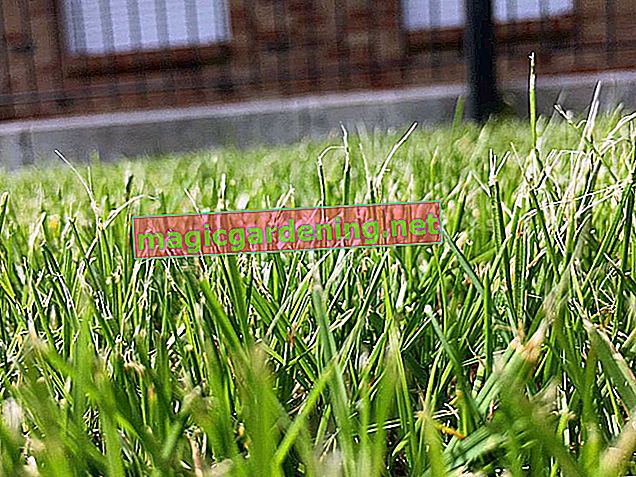
Turf only appears to be iron deficient
The element iron is found in abundance in normal garden soil. If moss spreads aggressively in the lawn, while the noble grasses turn yellow, these symptoms undoubtedly indicate iron deficiency. This paradox is due to the fact that the grass roots are denied access to the rich iron stores in the ground. Before sprinkling iron fertilizers with toxic iron (II) sulfate, the following triggers for iron blockage should be eliminated:
- PH value too low - solution: Limescale the lawn to a pH value between 6.0 and 7.0
- Compaction and waterlogging - solution: Scarify, aerate and sand the green area
- Lack of light - solution: sow shadow lawns or plant sturdy ground cover as a lawn substitute, such as star moss or ivy
also read
- Does iron fertilizer help against weeds?
- Does blue grain help against moss in the lawn?
- What helps against moss and clover in the lawn?
If you can identify one or more of these factors as the cause of the moss-covered lawn, you can safely dispense with the use of iron fertilizers. By improving the basic conditions for the lawn, all the important nutrients for the roots will be available again. This results in strengthened lawn grasses that are not so easily defeated by a moss invasion.
Instructions for applying iron fertilizer
Were you able to determine in the process of elimination that the reasons explained do not apply to your moss-covered lawn? Then you are dealing with a rare, de facto iron deficit in the soil. In this case, the specialist trade has special iron fertilizer for lawns ready. When using them, please note that these fertilizers contain toxic iron (II) sulfate. How to use the preparation properly:
- The best time is in March / April, when the soil temperature exceeds 10 degrees Celsius
- Mow the lawn up to 3 or 4 cm stalk height
- Put on protective clothing and a breathing mask
- Dissolve iron fertilizer in water and apply with a watering can or pressure sprayer
In liquid form, you achieve the most effective effect with iron fertilizer, since the molecules get into the interior of the plant via the leaves. For the watering can, dissolve 5 ml of iron fertilizer per liter of water. In the pressure sprayer, a 1 percent concentration has proven itself with 10 ml for every liter of water. After 5 to 10 days, the moss will have died and can be combed out with a rake.
Tips
Toxic iron fertilizer not only pollutes the environment, but also leaves ugly stains on paved surfaces. You should therefore protect adjacent stone paths with a foil cover before use. Do not step on paving stones after walking on the fertilized lawn, as the footprints can hardly be removed.








